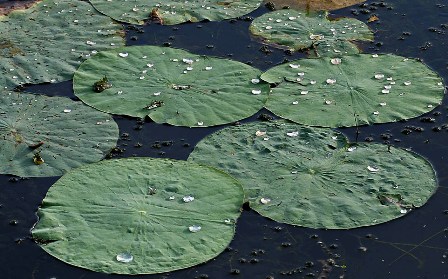The Lotus Effect
1 John 1:9
“If we confess our sins, he is faithful and just to forgive us our sins, and to cleanse us from all unrighteousness.”
Perhaps you have a self-cleaning oven in your kitchen, and if you have small children in your house, you’ve probably wished for self-cleaning walls. Self-cleaning clothes would be nice, too!

Researchers realized that this microscopic spike structure could be used to make self- cleaning products. For example, self-cleaning paint for homes is already in use under the product name Lotusan. Self-cleaning food containers are being developed as well. And one day we may even have self-cleaning clothes, including swimming suits that never get wet.
However, when it comes to our standing before God, we are not self-cleaning. We must rely on the cleansing from our sin won for us by our Lord Jesus on the cross.
Prayer:
Father, thank You for the forgiveness of sins I have through my Lord Jesus Christ and the life He gives me. Amen.
Notes:
Science Illustrated, 7/8/08, pp. 62-69, “Inspired by Nature,” (“Mr. Clean,” pp. 68-69). Photo: Indian lotus at Lotus Pond in India, showing the lotus effect after rain. Courtesy of J.M.Garg. (CC BY 3.0)